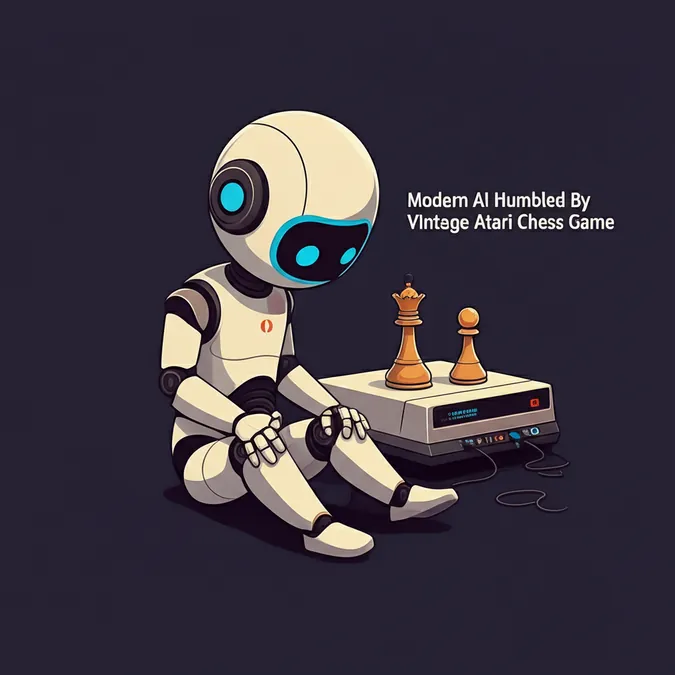AI Memes And The Degradation Of Modern Politics
The White House New Weapon AI Memes
The official White House account on X (formerly Twitter) frequently posts AI-generated memes, almost on a daily basis. These images vary widely in their nature. Some aim for humor, like depicting Trump as the pope. Others are starkly didactic, such as a modified version of Shepard Fairey's Obama 2008 campaign poster where "HOPE" is replaced with inflammatory and false claims. Then there are those that are morally repulsive, like an image of an ICE agent arresting a sobbing woman, rendered in the style of Studio Ghibli animated films. AI-generated memes have become the hallmark of this administration, akin to how the collective energy of rallies and the distinct tackiness of the MAGA hat defined the first term. This is the house style that sets the tone for national life.
Presidential Style Shaping National Identity
In his 1981 book The Kennedy Imprisonment, Garry Wills discussed John F. Kennedy's unique blend of captivating style and political ambiguity. While JFK's specific policy stances were often unclear, his style was undeniable. Wills argued this was a deliberate political strategy where presidential style didn't just set a political agenda but also shaped the national mood and self-perception. The image projected by the President, Wills wrote, becomes the country's self-image, influencing its aspirations and standards.
The tone set by the Trump administration’s AI memes is characterized by shrillness and cruelty. These images seem to almost invite the violence they portray. By the time the Studio Ghibli-esque ICE image was posted, that particular meme format was already losing its novelty. AI image generators accelerate the lifecycle of memes, causing them to become stale faster. This necessitates an ever-increasing pool of violent imagery from which new memes can be derived. The constant stream of such images encourages a deeper craving for violence, inviting us to view human suffering as mere raw material for a fleeting moment of numb amusement while scrolling through social media. To adapt Wills's idea: The AI meme disseminated by the President shapes the country’s self-image, lowering the expectations to which it conforms.
AI The Blurry Photocopy Effect on Information
The moral decline made apparent by the presidential embrace of AI-generated memes seems connected to a more fundamental degradation inherent in how Large Language Models (LLMs) and AI image generators function. Writer Ted Chiang explains that LLMs like ChatGPT and AI image generators such as Midjourney operate somewhat like creating a blurry photocopy of all information on the internet. To generate text or an image, these AI models scan vast amounts of human-created content and then reproduce it in a slightly degraded version. The issue is that as AI-generated content forms an increasingly larger portion of the internet, the dataset itself becomes progressively more degraded. Clarity diminishes with each iteration, much like making a photocopy of a photocopy repeatedly.
The Tangible Degradation AI Environmental and Ethical Costs
Beyond this informational corruption, AI also has more tangible, materially corrupting effects. Each query to ChatGPT reportedly uses as much energy as keeping a lightbulb on for 20 minutes. Microsoft’s carbon emissions have surged by nearly a third since the company started developing new AI-focused data centers. The earth itself is being degraded by AI. Approximately two-thirds of new AI data centers, which require enormous amounts of water for cooling servers, are being constructed in areas already suffering from acute water shortages. This doesn't even touch upon the destructive capabilities of AI-powered weaponry, most horrifically demonstrated in the Israeli military’s use of AI to automate attacks in Gaza.
The cruel AI memes endorsed by the Trump administration are symptomatic of a profound moral decay. This moral degradation, it is argued, cannot be easily separated from the degrading impacts AI has on information and the planet. All these forms of corruption appear to be interconnected.
Is AI Evil A Theological Inquiry
It is believed that Christians should adopt a critical stance towards AI, viewing it as a danger to our moral, intellectual, and material well-being. Theological history, it is suggested, guides us towards such a critical position. AI models lack inherent existence; they function as pale imitations of genuine creativity, thereby corrupting intellectual judgment, moral discernment, and even the material reality they interact with. For centuries, theologians have used a specific term for this kind of corrupting, parasitic non-being: evil.
It has been argued previously that understanding contemporary political realities can be aided by revisiting the somewhat unfashionable theological language of the demonic. When considering AI, a similar approach using the language of evil is proposed. While labeling AI as evil might seem hyperbolic, theological analyses of evil can help us grasp how a technology that operates by emptily mimicking human creativity can exert such damaging effects on thought, art, morals, and the physical world. A particularly helpful theological perspective on evil for understanding AI is the long-standing argument, dating back at least to St. Augustine in the fourth century, that evil does not truly exist.
The core of this argument is that God created the world and declared it good; therefore, everything that exists must be good. Evil should not be conceived as a tangible 'thing' but rather as a term for the negation or corruption of what genuinely exists. This is analogous to how darkness is the absence of light, or cold is the absence of heat. In his Church Dogmatics, Karl Barth, in the chapter "God and Nothingness," describes evil as, strictly speaking, nothing. Evil, Barth writes, possesses "only the truth of falsehood, the power of impotence, the sense of non-sense."
For Barth, although evil does not technically exist, it "has its own dynamic." This dynamic is one of imitation. This concept of evil as an imitative nothingness is where Barth's ideas become particularly useful for analyzing the dangers of AI. The real world of creation, along with the things we creatures create like art and thought, all exist and, by virtue of existing, are good. Evil, in Barth’s view, is a false imitation of the acts of God and God’s creatures; it "plays at creation and redemption, providence and dominion." Barth’s judgment on this mimicry is unequivocal: "All falsehood!"
Mimicry Not Creation AIs Core Limitation
If Barth's assertion that evil is the empty imitation of truth, power, sense, and creativity is correct, then it might not be unreasonable to label AI as evil, despite how excessive that might initially sound. AI is not genuinely creative; it is a mimicry of creativity. It functions by collecting everything humans have painstakingly created—visual art, literature, music, film, encyclopedias, recipes—and then generating a facsimile. To be fair, there are instances where pale imitations of creativity can be useful and even beneficial. For example, modeling protein folding, a repetitive and time-consuming task for biologists, has benefitted immensely from AI's capacity to generate vast numbers of models with sufficient accuracy. The number of lives that might be saved by research facilitated by AI-generated protein models is unknown, and the moral danger of using AI as a brute computational tool in such cases seems minimal. The moral risks arise when AI is employed in the realm of creativity itself—art, education, thought—where it can only mimic and degrade.
The Societal Impact of AI Degradation
We are already witnessing these risks manifest. In a poll conducted shortly after ChatGPT's launch, as many as 90 percent of college students admitted to using AI to summarize readings and write assignments. The Trump administration's enthusiasm for cruel AI-generated memes demonstrates the effects that AI "slop" can have not only on our environment and intellectual life but also on our moral compass as we attempt to navigate a shared national existence. We are in a perilous era where an increasing number of people are willingly surrendering their abilities to read, create art, think critically, and judge morally to a computer program that "exists" only by mimicking and degrading these very faculties. That this corrupting nothingness has become a presidential style forewarns a dark future for our national life.
A Call for Critical Discernment Towards AI
In his discussion of the nothingness of evil, Barth condemns "the mimicry of nothingness—the play of that which is absolutely useless and worthless, yet which is not prepared to allow that this is the case, but pretends to be vitally necessary and of supreme worth." At a time when the White House is filled with AI advocates eagerly promoting the vital necessity and supreme worth of their products—marketing AI teachers, AI filmmakers, AI therapists, AI weapons—we should not hesitate to revive unfashionable language from theological history and identify all this as evil.
Thankfully, Barth offers sound advice on how to approach evil: "Distaste is the only possible attitude." It is time for Christians to cultivate and refine their distaste.


